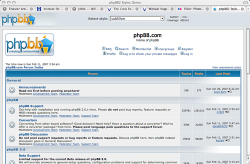Ampelspiel
Ampelspiel

Foto von Tmuna Fish (abgerufen am 09.02.2010)
Kurzbeschreibung
Das Ampelspiel eignet sich dazu, in Einstiegsphasen relativ schnell ein Meinungsspektrum oder Stimmungsbild in der Lerngruppe sichtbar zu machen.
Ablauf
Zu Beginn des Seminars werden durch den Kursleiter verschiedene, zugespitzte Aussagen vorgetragen.
Jeder Teilnehmer hat einen dreiteiligen Kartensatz: Rot, Gelb, Grün.
-
Der Teilnehmer signalisiert nach jeder vorgetragenen Aussage seinen Standpunkt.
Rot = Ablehnung Gelb = Enthaltung Grün = Zustimmung
Es kann besprochen werden, bei welcher Aussage das Positionieren am schwersten fiel.
Benötigte Tools und Materialien
Offline:
Karten in drei Farben (rot, gelb, grün)
Online:
Forum
Wiki
Doodle
Beispiele und Links
Kommentare
Eine abgewandelte Variante setze ich zu Beginn eines neuen Kurses ein, um durch drei Standardfragen eine entspannte Lernatmosphäre zu schaffen. Im "sudile"- Lernmanagementsystem verwende ich dafür auch den Profileditor. -- Peter Koppatz








